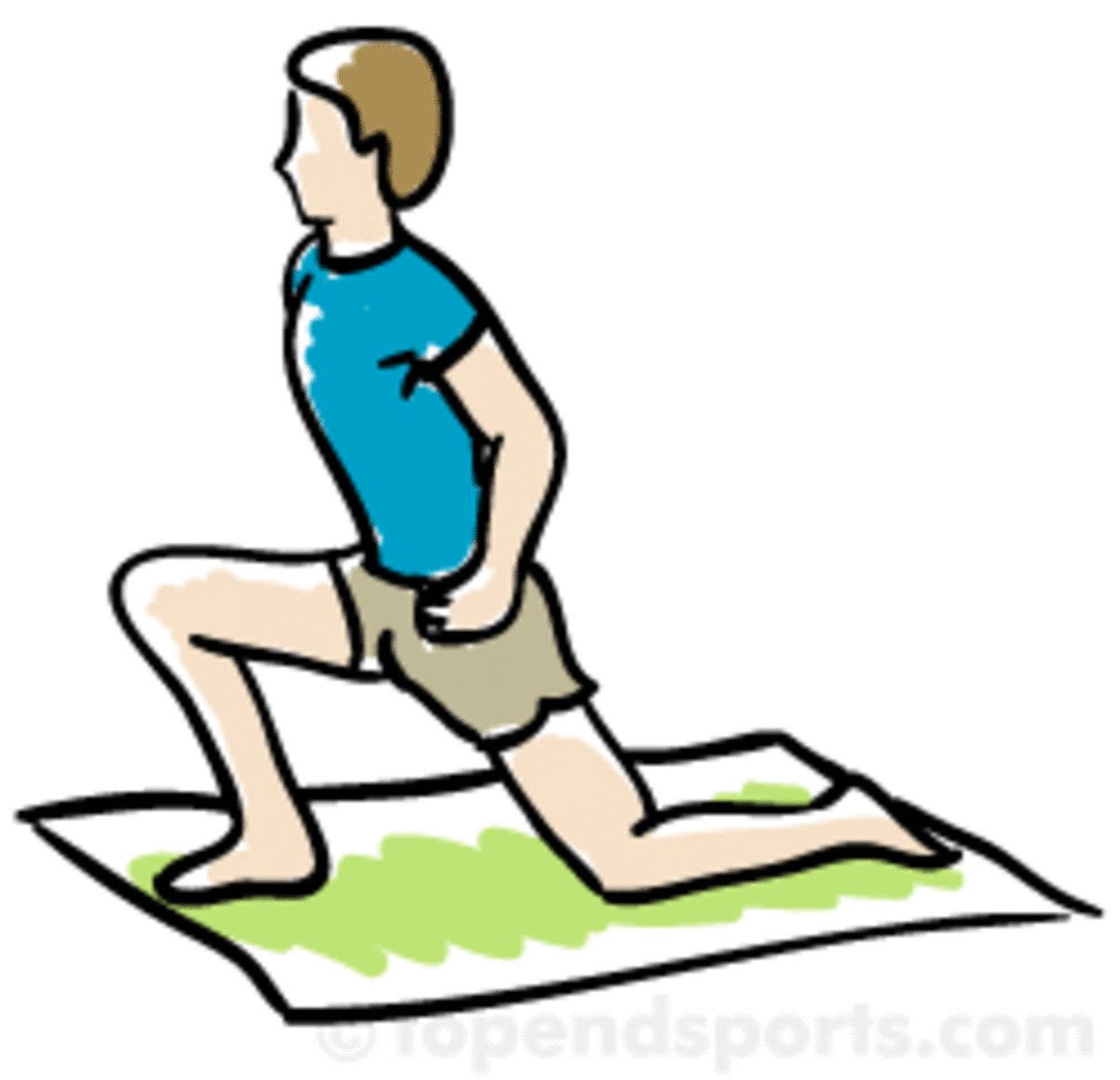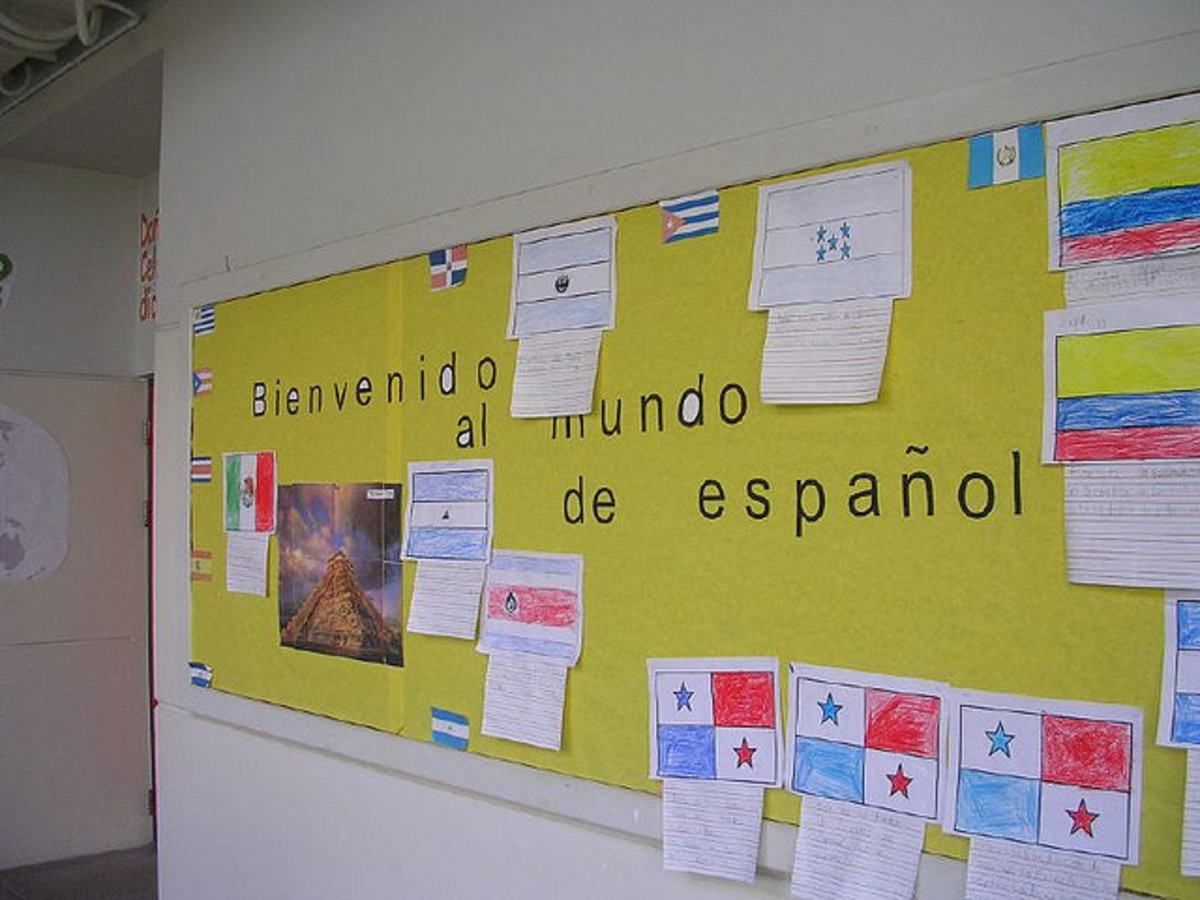Spanish Lesson Twenty-Nine: Here, There, and Everywhere

Sunday, December 23, 2012:
Hello readers, it's good to be back! I'm super excited about this lesson because it's actually something I know very little about. Once again I'm going to point out how fast time goes by. I feel like last time this week I was writing this lesson. I just want to say, Merry Christmas to everyone. I'm sure very few people have time to learn Spanish today, but I'll post it and you can read it when you have time. These lessons stay on HubPages. They're not going anywhere. If you haven't read any of them, start at Lesson One if you'd like. I'm sure you'll love the fresh start. I'm not 100% fluent, but I know a lot and care share a great deal of knowledge about the language. Come here for all your Spanish needs. :) If you have questions or comments, shoot me an email. Take a look at today's lesson, Lesson Twenty-Nine: Here, There, and Everywhere.
Today's Goals: To learn and understand relative location in Spanish. To also be able to apply it to our daily lives.

Today's Vocabulary
Today's vocabulary, like always, will consist of a hodgepodge of words consisting of nouns, verbs, adjectives, and reflexive verbs. These words come from reputable sources and can help you maintain fluency. Once I've gone through all the verbs on my list, they will be recycled through once again for repetition. Also beginning with lesson Thirty-One, the warm-up will consist of a sentence completion to test your knowledge thus far. Because it is further along in the lessons, you should be able to complete it easily. It is my hope that you become increasingly able to speak, write, listen, and read the Spanish language.
Today's Tips: Don't focus so much on how difficult Spanish appears from appear. It is really simple if you take a deep breath. Sometimes it takes a moment to realize that Spanish is as simple as English. Words have multiple connotations and meanings, different spellings and pronunciations. Spanish, if anything, is easier than the English language. Just don't fret. Continue to nurture your knowledge base.
Verbs
To Call Together/To Convene/To Summon: Convocar
To Correct: Corregir
To Run/To Race/To Flow: Correr
To Cut/To Cut Off/To Cut Out: Cortar
To Cost: Costar
To Grow: Crecer
To Believe: Creer
Reflexive Verbs
To Become Angry/To Get Angry/To Get Cross: Enojarse
To Be Mistaken/To Make A Mistake: Equivocarse
To Take Notice/To Pay Attenion/To Settle: Fijarse
To Inform Oneself/To Find Out: Informarse
To Enroll/To Register/To Sign Up: Inscribirse
To Be Interested In: Interesarse
To Go Away: Irse
Nouns
Chores: Las Tareas Domésticas
Laundry: La Lavandería
Sweep: Barrer El Piso
To Clean The Dishes: Lavar Los Platos
To Dust: Limpiar El Povo de...
To Vacuum: Pasar La Aspiradora por...
To Fold Clothes: Doblar la ropa
Adjectives
Stupid: Estúpido(a)
Smart: Ser Listo(a)
Intelligent: Inteligente
Intuitive: Intuitivo(a)
Understanding: Comprensivo(a)

Warm-Up
Take a long, hard look at the table provided after today's video. It will give you the masculine, feminine, singular, and plural words for each relative location in Spanish. Honestly I still haven't gotten this down packed yet. It takes some time to learn this stuff. This, That, These, and Those is also hard to learn. Don't fret if you don't get it right off the bat. I still don't get it and I've been learning Spanish for seven years. Of course I took a few breaks in between. ;) Take a look at the video below. Listen to the song and see how many words you can here within it. Write them down, check the lyrics, and define those words in addition the words unfamiliar to you. That's how I learned a lot of the words I know. Give it a try!
Here, There, Everywhere
Location
| Spanish Adverb
|
|---|---|
Here
| Aqui/Acá*
|
Over There (Nearer)
| Ahí
|
Over There (Farther Away)
| Allí/Allá*
|
Everywhere
| Por Todas Partes/Por Doquier*
|
How To Use
Hey everyone!! It's Sunday again! I'm glad you are all back and ready to learn some more Spanish. I'd like to start off by wishing everyone ¡Feliz Navidad! (Merry Christmas). Thanks for all your support and views over the past six months. Next year is going to bright and awesome. So here's today's lesson. It's not too hard.
If you'll remember correctly, the verb Estar is used when discussing relative location. If you're discussing location with a form of "to be" make sure it's Estar and not Ser. The words in the chart above are adverbs, but like our English words Here, There, Everywhere, All Over, Under, etc. These words have been a mystery to me for some time. Let's go over there separately to understand when to use each one.
Aqui- Can be used when determining that something is "here" in "this spot" or "right here". This word is pretty self explanatory. Acá can also be used in this case, but more to say "over here" instead of "right here". Check out these examples.
¡Ven aqui! Come here! If you'll remember the word Ven comes from the command involving the verb Venir which means "to come". So this command is commonly used to command someone to come "right here". You can also use Acá in this case too. It's generally used in Latin America. That would mean more so "Come over over". A common phrase used with that word is Ven para acá which means "come over here."
Ahí- Can be used when determining something that is "there" and somewhat close to the speaker and the person being spoken to. It's pretty much used when something is right in front of someone or around their general area. Look at this example.
El libro está ahí, al lado de tus pies. The book is there, at the side (beside) of your feet. I used this sentence to give you a good idea. Suppose you point to something really close to someone else. Use Ahí to specify that object. Get it?
Allí- Can be used when determining something that is "there" and farther away from the speaker and the person being spoken to. It's used when discussing something that is farther away than in the vicinity. Also when asking someone if they are there on the telephone. Generally this for things happening in the distance, not so clear for you to see. Allá has been used in Latin America as an equivalent to this word just as Acá instead of Aqui.
¿Qué pasa allí por la calle? What's happening (over) there on the street? This sentence is asking a question about something happening farther down the road. It's in the distance and away from the speaker and the person being spoken to.
Por Todas Partes- Can be used to discuss things that exist in "all parts" or "everywhere." There are several ways to express "Everywhere" in the Spanish language. This one I've seen as most common. There is also Por Doquier , Por Todos Lados (On all sides), Todas Partes to express the idea of "everywhere". Dondequiera expresses the word as "Wherever it might be", is followed be the word que and is used mostly in the Subjunctive. Don't worry we'll learn more about it in the future. For now, let's just focus on Todas Partes and Por Todas Partes to describe "everywhere".
Liz buscó por todas partes en el apartamento para su telefono. Liz looked (on all parts) everywhere in the apartment for her phone. This sentence is a good example. Just think of the two phrases to mean in all parts.
Special Rule for Allí and Ahí: Here's a special rule for these two words. They can also express emotional distance as well as physical distance. So think of it in both aspects. Here's an example of a sentence that can be physical or emotional, using the same word.
Estoy contento que estás ahí por mi. I am happy that you are there for me. This could be used in a physical or emotional sense. The sentence has the same meaning like it would in English. This is an example of that.
Well thanks everyone for reading! I can't wait to see you all next week. :) Good luck with what you learned today!

Homework
So yeah, I have another video from Señor Belles pertaining to last week's lesson. I totally love what he says about the differences between Ponerse, Hacerse, Llegar a ser, and Volverse. So definitely listen to everything he says about everything. We will go back over these at a later date and discuss their differences. I know, it's a lot, but everyone should learn as many possible ways to say things. I think it's a good thing to be versatile. Check out the video, visit his page and watch his other videos. Click--->this.
Oh! Next week we'll have a double day. I'll post Quiz #3 in addition to Spanish Lesson Thirty. Get your practice in and stop by to learn about Writing About Yourself. It'll be fun! Stop by. :)
Also Check Out...
- Spanish Lesson: Here and There - Adverbs of Location
n Spanish, adverbs of place can be used to give a location or explain where something is happening. - Spanish Experts: Aquí, acá, ahí, allí, allá
- Acá, allá, aquí, ahí, allí. How do you say here and there in Spanish?








